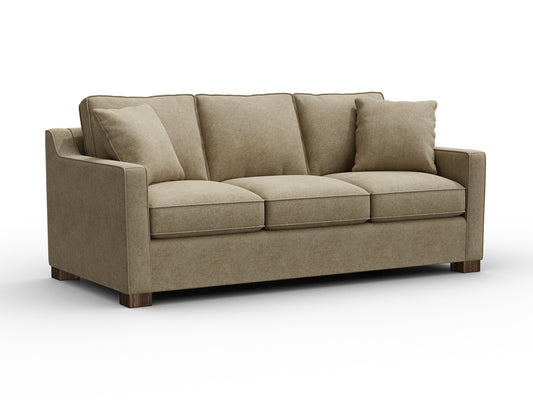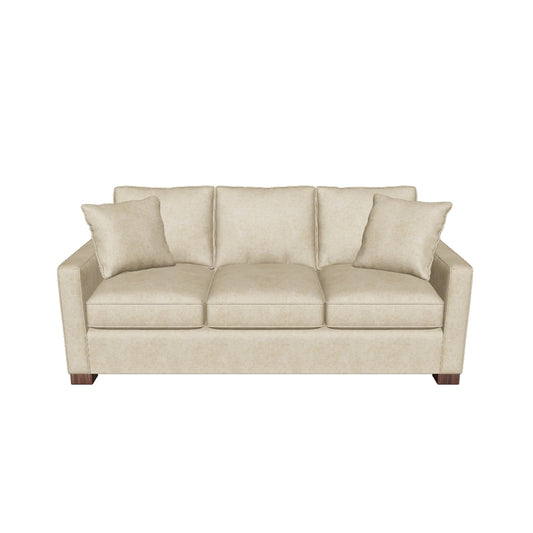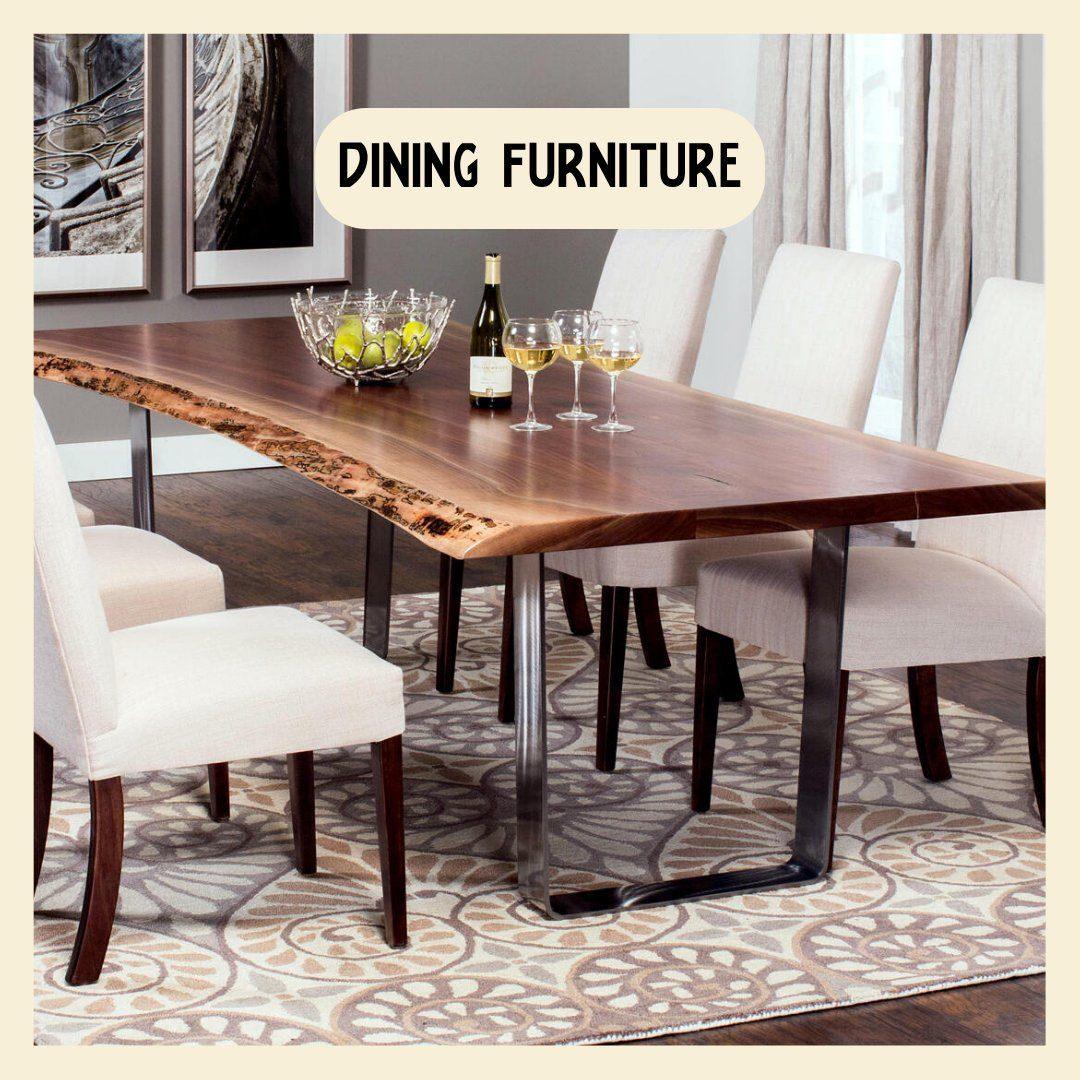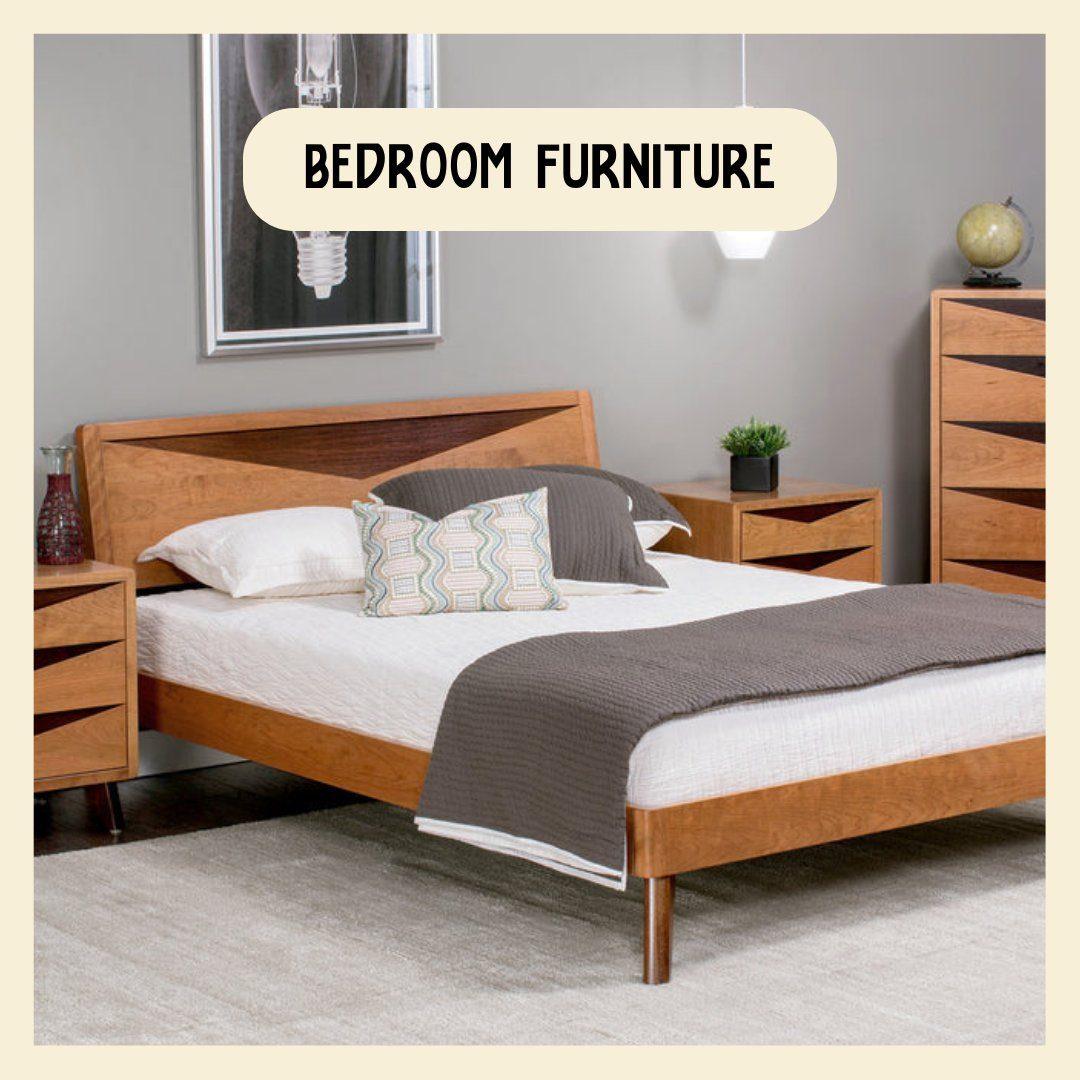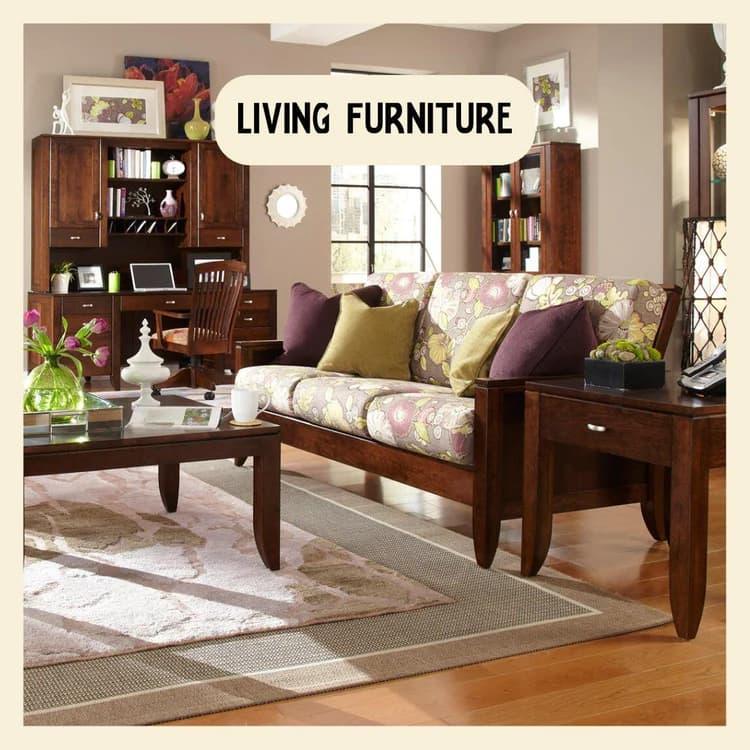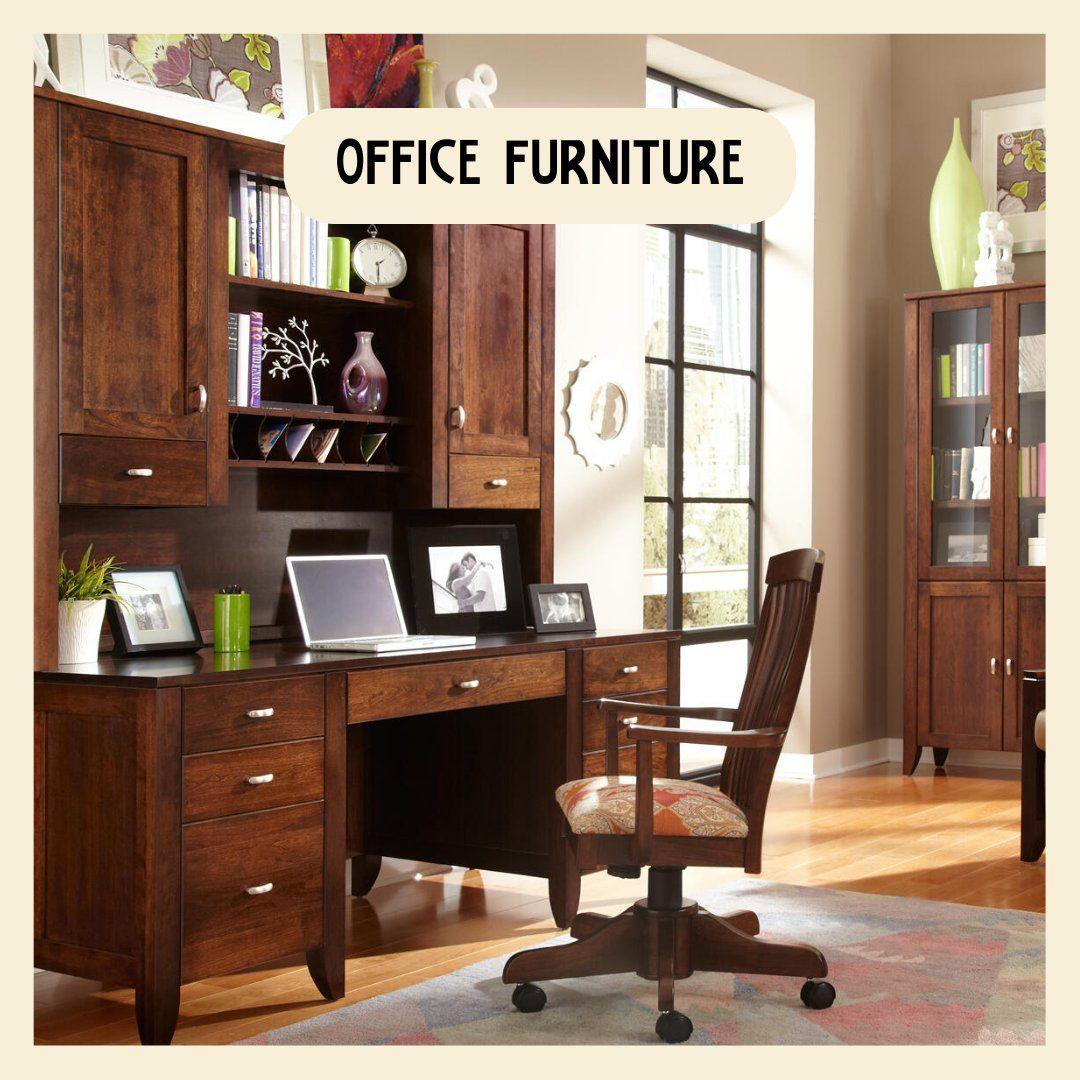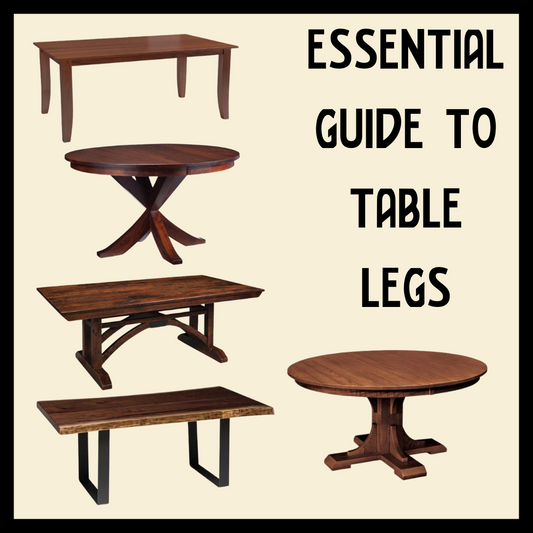The Complete Sofa Buying Guide: How to Select the Perfect Sofa for Your Home
Updated September 2024
A sofa is a big investment - not only in money but in the time you’ll spend using it. The last thing you want is to get your new sofa home and find it doesn’t feel right, doesn’t work with your living space or doesn’t even fit through the door.
With so many different options to choose from, how do you feel confident that you are choosing the right one?
We’ve broken down this guide into three sections to help you with wherever you’re at in your sofa buying journey.
1. What to Consider Before You Buy (couch types, upholstery types, measurement)
2. What to Consider While You Buy (frame construction, cushion types, warranty, fabric durability)
3. What to Consider After You Buy (care and cleaning)

When it comes to furniture, it’s what’s inside that counts. A pricier sofa is built to last, while the cheap one? It's headed for the curb in two years. Trust us, skimping now means paying more later!
What to consider before buying a quality sofa
The sofa, also known as a couch, is often the first piece of furniture you think about when you buy or rent a new home. That purchase will inform the rest of the furniture in the house - what style will it be? What is the color palette? Is it casual or formal?
So before you buy your next sofa - one of the more expensive, most used and most permanent pieces of furniture in your house - think through the following questions to help you determine exactly what to look for when buying a sofa.
How will you use the sofa?
Think about your lifestyle, where the sofa will be placed, and who will be using it the most.
- Will it be used in a formal living room for entertaining or as a crash pad in front of the TV?
- Does it need to be plush and comfortable or firmer with greater support?
Determining how this piece of furniture will be used before you start looking at options will help you to choose the right sofa for your lifestyle.
What type of sofa do you want?
The answer to this question will be based on how much space you have, how many people you’d like to fit and whether you need additional sleeping arrangements.
Common types of sofas include:
- Traditional Sofa or Couch - measures 72-90 inches and seats 3 to 4 people
- Sectional Sofas - a modular sofa with 2 or more pieces put together to create an L- or U-shape configuration. With a Sectional Planner, you can do your own measurements and dream up any configuration to fit your space
- Sleeper Sofa - a convertible sofa that transforms to lay flat with a mattress to sleep on
- Chaise Lounge - a type of sofa that is designed with an extended seat on one side to support your legs. Chaises come in different styles and materials, ranging from traditional to mid-century modern designs, and can be upholstered in various fabrics or leathers.
- Loveseat - two-seater sofas ranging from 48 to 72 inches
- Recliner Sofa - a type of reclining sofa that has a mechanism that allows the backrest to recline backward, usually in a smooth and seamless motion, and may also extend the footrest
- Apartment Sofa - Designed for small spaces and generally between the loveseat and standard sofa sizes
- 4 Seat Sofa - Extra long version of a regular sofa, with the same depth and height
How many people do you want to fit comfortably? Are there kids or pets?
It’s important to consider not only how many people will be using this piece of furniture, but also how they will be sitting. If one person likes to lie down and the other likes to sit, make sure you get a sofa large enough for that configuration. You can also test out two loveseats facing each other or different size sofas configured in a L-shape as opposed to going with a fully custom sectional option.
If you have kids or pets, stain-resistant fabric or sealed leather upholstered sofas will be the easiest to clean and maintain. You might also want to consider a standard size sofa that you can easily find a slipcover for to help protect the fabric and make it easy to clean. Make sure the upholstery fabrics you choose have a high rub count (greater than 50,000). Sinuous springs are better for bouncy kids than hand-tied ones. Stay away from down-filled cushions that are likely to become quickly deformed.
Do you know your measurements?
If you’ve ever fallen in love with the perfect sofa only to have it delivered and find out it doesn’t match your home decor or can’t fit through the doorway, you’ll understand why measuring accurately is so important.
Tips for measuring:
- Measure the depth and width of the sofa. Keep in mind quality designs will have legs that detach for extra wiggle room.
- Measure the spaces the sofa will pass through like staircases or hallways.
- Find out if you need to leave room for packaging when delivered.
- Use masking tape, cardboard or paper to lay out the exact size of your sofa where you intend to put it - this will help you visualize if it’ll work.
The sofa you buy should fill the room without overwhelming it. If your ceiling is low, choose one with a lower back. If it’s high, choose one with a higher back. If there’s other furniture in the room, make sure your sofa will be complementary and proportionate to whatever is already there.
What to consider while buying a quality sofa

Picking a sofa that lasts is about more than price, brand, or compliments. At Modern Bungalow, it’s all about craftsmanship and quality materials. When you nail those, your furniture will not only look great—it’ll feel great for years!
If you really want to understand why one sofa costs $200 and others cost $2,000, let us walk you through how these modern sofas are made.
Check for quality construction:
Frame:
- Natural wood that is kiln-dried is the highest quality; MDF (medium density fiberboard) is the lowest. Mid-price brands often use plywood, which can be very strong depending on how thick it is and how it is used in construction.
- Kiln-dried hardwood means the material’s been stabilized, completely dried and won’t warp.
- Having a high-quality frame means you’re more likely to reupholster or resell rather than send it to the landfill.
Joints:
- Look for sofas that use a combination of dowels/staples/screws and wood corner blocks or metal brackets for reinforcement and durability. You can ask your furniture salesperson for these details, or if you’re shopping in person you can push the end to see if it wobbles at all or feels unstable.
- Avoid those held together by only staples, glue or nails and without corner blocks for added stability.
Suspension:
- Sinuous springs are used in quality sofas, are S-shaped and run up and down the sofa.
- 8-way hand-tied springs are metal coils supported by an additional layer of twine (tied on) or metal, alleviating sagging and squeaking.
- Pirelli webbing is used as an alternative to springs in quality sofas and is made of rubber that is durable and long-lasting.
- Poly-webbing is used in lower quality sofas, offers little bounce and tends to sag like a hammock.
Upholstery:
- Cushions, both seat cushions and back cushions, should be fully upholstered on both sides to allow for rotating and flipping the cushions for even wear.
- Ask about the rub count rating to indicate how long the material is likely to last.
- The Martindale rub test is the process of simulating wear and tear by the use of a machine repeatedly rubbing the fabric until it starts to break down. For a residential sofa, aim for a score of at least 25,000-50,000 rubs.
- Consider kids, pets and exactly how and where you’ll be using your sofa.
Sofa Cushions:
- High quality polyurethane foam is most commonly used and should be dense - at least 2.0 pounds. Most budget brands use 1.5 pound density foam or lower, which leads to quick breakdown of the cushions.
- The quality and longevity of the back and seat cushions is tied to the density of the foam, but even high-density foam can have soft, medium and firm compression.
- Custom-made sofas, like the ones we carry at Modern Bungalow, allow customers to choose the firmness of cushions.
- To maintain a cushion’s shape, high quality ones will have a core wrapped in material such as Dacron which prevents the upholstery covering from creeping or slipping.
Warranty
- The higher quality the furniture, the better the warranty.
- You’ll often find a lifetime warranty on sofa frames with additional warranty timeframes to cover all other parts including fabric, cushions and suspension.
- Often a lifetime warranty will actually be prorated over 20 or 25 years. This means if you have owned the sofa for 10 years and the frame fails, you may get a credit for half of the purchase price toward a new sofa.

What to consider after buying a quality sofa

If you’ve put forth the effort to buy something made with the best materials available, you won’t have to do much to keep it looking great.
High quality sofa makers use long lasting, durable materials and will treat each fiber with superior stain protection. This doesn’t mean you shouldn’t clean up when you spill, but it’ll give you peace of mind knowing your fabric already has a first line of defense.
What you can do to protect your upholstered sofa:
Vacuum
- Vacuum regularly to help prevent surface dirt from getting embedded into fibers
- Use a soft bristled brush that won’t snag the fabric
Spot clean
- Blot excess mess with a dry towel turning frequently so the stain doesn’t transfer
- Use soap + water solution - Stylus recommends ¼ teaspoon enzyme laundry detergent such as Tide or Cheer with 1 cup warm water
- Apply with spray bottle and rub in with soft bristled brush
- Blot with a clean towel and rinse
- Repeat as needed
Turn and move cushions
- Helps to evenly distribute wear and tear
Avoid direct sunlight and pollutants
- Too much direct sun can cause fabric to fade and fray
- Cooking fumes and smoke can cause harm - keep area ventilated
Call a professional
- Experts recommend doing this every few years
- Don’t wait for it to become visibly dirty as it will be harder to clean
Leather Sofas:
- Avoid long periods of direct exposure to sunlight and heat (such as radiators, vents, skylights, etc)
- Do not use Armor All, saddle soaps, ammonia based solutions, Windex, or any cleaners or conditioners that do not have your specific type of leather on the label
- Butter, grease, oil and water-based liquids should be blotted and left to naturally air dry
- Wax, gum and ink should be removed by a professional leather cleaning company
---
Looking for the best sofa for your home? When you're ready to shop, Modern Bungalow is here to guide you in selecting your next custom-made sofa from one of our trusted and carefully selected high-quality furniture makers.


